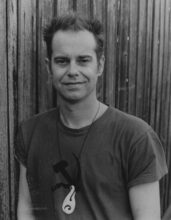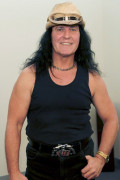Australia’s live performance industry registered $1.43 billion in revenues in 2016, and increase on the 2015 future.
Ticket sales have increased by 35% since 2008 and attendance has grown by 19%.
Contemporary music generated 30.8% of revenue and 30.1% of attendance. Festivals had a significant drop of 25.2% in revenue based on the cancellation of Future Music Festival and Stereosonic.
“These figures underscore the economic and cultural value of the live performance industry for millions of Australians. The need for increased investment in the performing arts has never been greater.
“The survey results also support recent customer spending data that shows more Australians are spending their hard earned cash on ‘meaningful experiences’ such as concert tickets and the theatre. Our research reaffirms the important contribution that live performance makes to the national culture and the creative economy.
“We have access to a wide array of high-quality local and international performances, which the report shows Australians truly value and enjoy. However, if Australia is going to continue to compete globally, to satisfy both Australian audiences and attract international tourists, we need to ensure we invest more, not less, in creating local product that is world class,” said Ms Richardson.
“Instead, the last few years have seen funding cuts, our small to medium sector massively impacted, and very little indication that Government is prepared to deliver on its vision for innovation and jobs growth in our sector.
“We strongly believe that the Government needs to step up and support greater investment in our industry which creates jobs, employs more than 34 000 people, generates significant economic activity and enriches the cultural lives of millions of Australians,“ Ms Richardson said.
Other key findings from the research include:
• Both NSW and VIC command a larger share of revenue and attendance compared to their respective share of Australia’s population. Victoria had the highest spend per capita in 2014, 2015 and 2016 ($70.52).
• Consistent with previous years, NSW generated the highest share of live performance revenue (37%) and attendance (32%), with Victoria being the second largest contributor; revenue (31%) and attendance (29%).
• Tasmania experienced the highest state growth in revenue (38.5%) and attendance (13.7%). This growth was primarily driven by performances by Cirque du Soleil in Hobart.
• New South Wales also experienced 10.9% growth in revenue with attendance up 8.6%. Growth was largely driven by Circus and Physical Theatre (Cirque du Soleil tours) revenue up by 140% and attendance 122.1%; Comedy revenue was up by 82.4% and attendance by 115.7% driven by international comedians touring; Classical Music revenue was up by 42.7% and attendance by 29.8% due to the return of Andre Rieu for the first time since 2013; and Musical Theatre revenue was up by 15.5% and attendance by 5.4% due to major musicals performing including My Fair Lady, The Sound of Music and Aladdin.
• Victoria remained steady, recording slight growth in revenue (0.8%) with a slight 2.1% decrease in attendance. Revenue growth was driven by significant increases in Opera (53.6%) largely due to The Ring Cycle, and Special Events (340.2%) due to the Royal Edinburgh Military Tattoo performing in Melbourne for the first time.
• Queensland, ACT and the Northern Territory all experienced declines in revenue and attendance. ACT experienced the greatest decline in revenue (16.8%) and attendance
(15.9%) amongst all the states and territories. This was largely because Cirque du Soleil did not return to Canberra in 2016.
• Revenue (7.7%) and attendance (13.3%) declines in Queensland were driven by a 30% decrease in musical theatre revenue and attendance compared to 2015 and Festivals (Multi-category) revenue declined by 25% and attendance by 17.6% due to falling ticket prices across festivals held in the state. However, Queensland recorded substantial revenue growth (46.1%) and attendance (31.4%) in the Ballet and Dance category driven by high profile performances including Ballet Preljoca’s Snow White, the Australian Ballet’s Cinderella and Queensland Ballet’s Strictly Gershwin.
• Both WA and SA experienced declines in revenue, despite generating steady growth in attendance. WA has experienced a decrease in revenue each year since 2013, declining by 24% between 2013 and 2016. Despite this, WA has increased attendance to live events by 8% over the same period. Both WA and SA saw declines in Circus and Physical Theatre, Festivals (contemporary music) and Contemporary Music. Attendance growth in WA was driven by significant growth in Children’s/Family Events (169.8%) and Comedy (216.9%) due to the impact of tours, especially international tours, in both categories.
• SA has experienced steady growth in attendance each year since 2013, increasing by 20% between 2013 and 2016. However, revenue has declined each year since 2014, decreasing by 6.6% between 2014 and 2016. Major drivers of attendance growth in 2016 were Classical Music (78%) largely driven by the return of Andre Rieu, Musical Theatre (74.6%) and Children’s/Family Events (39.7).
Sector breakdown:
• The top 3 revenue categories (Contemporary Music, Musical Theatre, and Comedy) accounted for 61.1% of all industry revenue in 2016.
• The top 3 attendance categories (Contemporary Music, Musical Theatre and Festivals-Multi-category) represented 55.9% of market share.
• As with previous years, the Contemporary Music and Musical Theatre categories represent the two largest categories in the industry, generating 30.8% and 24.3% of revenue respectively. Combined, these two categories account for 55.1% of the live performance industry in terms of gross revenue ($788m) and 47.7% of total attendance (8.95m people).
• Contemporary Music and Festivals (contemporary music) combined accounted for 36.4% of revenue and 33.7% of attendance (compared with 2013 when both categories combined represented 45% of the market). Both categories experienced declines in revenue, 7.9% and 25.2% respectively.
• Opera and Musical Theatre both maintained moderate increases in revenue, driven by increases in the average ticket price. The Opera category saw 11.4% revenue growth while attendance declined by 5.8%. Revenue growth was due to The Ring Cycle being performed in Melbourne in 2016 and average ticket price increased by 20%. In Musical Theatre, revenue was up by 3.8% and attendance by 1.2%.
• Theatre saw 40% revenue growth and an increase of 19% in attendance. This is the first year of growth in the Theatre category following declines since 2014. 62.3% of revenue and 66.3% of attendance was generated by AMPAG companies. Overall, AMPAG companies experienced 12.9% growth in revenue and 1.5% growth in attendance. Growth in Theatre was primarily driven by a national tour of Mrs Brown’s Boys and STC’s Speed-the-Plow and MTC’s production of The Odd Couple.
• Classical Music saw 36.1% revenue growth and an increase of 22.7% in attendance. This is the highest revenue for Classical Music recorded since 2008 and highest attendance since 2012. The average ticket price increased by 9.7%. Growth in this category was primarily driven by the return of Andre Rieu and the BBC Proms festival held in Melbourne.
18.78 million tickets were sold for shows and events in Australia in 2016.


















